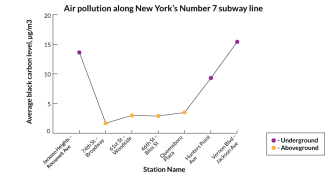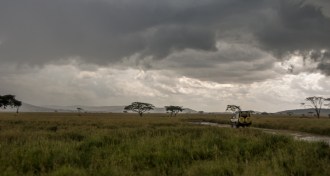Earth
Sign up for our newsletter
We summarize the week's scientific breakthroughs every Thursday.
-
 Environment
EnvironmentYear in review: Microbes exploit their killer
Triclosan, an unregulated antimicrobial chemical found in consumer products, may aid, rather than deter, microbes that invade people’s bodies.
By Beth Mole -
 Earth
EarthMega volcanism indicted in dinosaur demise
Precision dating strengthens idea that climate-altering Deccan volcanism contributed to dinosaur extinction.
-
 Earth
EarthMineralogy’s link to ecology makes an Earth twin unlikely
Earth’s unique blend of minerals emerged with the evolution of life, making it extremely unlikely that another planet has Earth’s exact mineral composition.
-
 Climate
ClimateCalifornia drought worst in at least 1,200 years
The current California drought is the most severe in 1,200 years, according to historical information gleaned from tree rings.
-
 Climate
ClimateResilience protects corals from hurricanes — and climate change
Coral reefs have evolved to be resilient in the face of hurricanes that can devastate human populations. But climate change is reducing the ability of reefs to bounce back from disaster.
-
 Environment
EnvironmentBlack carbon fouls New York subway stations
Black carbon, a respiratory irritant, fouls air in New York subway stations.
By Meghan Rosen -
 Climate
ClimateGreenhouse gases may spell wet future for Africa
Greenhouse gases played a role in boosting rainfall in Africa 14,000 to 21,000 years ago, a finding that may help predict future abundance of water on the continent.
By Beth Mole -

-
 Planetary Science
Planetary SciencePreparing for disaster, celebrating success
Science cannot prevent all disasters or solve all the problems they spawn, but it can point to the best ways to prepare, making disasters less damaging than they might otherwise be
By Eva Emerson -
 Earth
EarthStudying a volcano in a war zone
New isotope analyses offer bad news for the people of Goma, a burgeoning city in the Democratic Republic of the Congo: Mount Nyiragongo may be more dangerous than expected.
-
 Earth
EarthExhibit lays out principles for disaster-resistant structures
The National Building Museum’s ‘Designing for Disaster’ exhibit showcases the science and engineering of making disaster-resistant infrastructure.
By Erin Wayman -
 Earth
EarthEarth’s most abundant mineral finally has a name
Bridgmanite, the planet’s most common mineral, christened after traces found in 1879 meteorite.